Orchids are a wonderful way to inject some floral style into a terrarium.
A fan favorite for centuries, orchids range from classic flowering beauties to exotic tropical specimens.
Each has its unique charm, but they also come with their specific requirements. Whichever orchids you choose, you’ll need to tweak your terrarium environment accordingly.
Especially if you’re to be rewarded with those elusive blooms.
Fear not; in this guide, we’ll take you on an effervescent exploration of the orchid terrarium. Find the best plants, materials, and care to make your new terrarium blossom!
Figuratively and literally.

Terrarium Tribe is reader-supported. When you purchase through links on our site, we may earn an affiliate commission (at no further cost to you). 💜
Orchid Terrarium Overview
Orchids and terrariums have quite the history.
In fact, it was the original Wardian Case terrarium that enabled the orchid fever of the Victorian era (dubbed “Orchidelirium”).
How devilishly posh.
Since then, we’ve always been enamored with the range of dazzling orchid colors, shapes, and sizes.
To continue that legacy, we’re looking at creating a modern orchid terrarium.
But, orchids can be tricky in terrariums. Many species highly prize both humidity and ventilation and unless you live in the tropics, it can be hard to have them both at the same time…
So, there’s usually a balance to be struck between the two.
Thankfully, as terrarium builders, we do have solutions!
Choosing Orchids for Terrariums
1 | Size
Let’s face it; some orchids can get pretty tall.
So that can make finding suitable containers pretty tricky.
Thankfully, the wide variety of miniature orchids on the market are a much better fit for terrariums than the classics.
These range from exotic epiphytic species to elegant terrestrial jewel orchids. Find some you like the look of and see if they’ll fit!
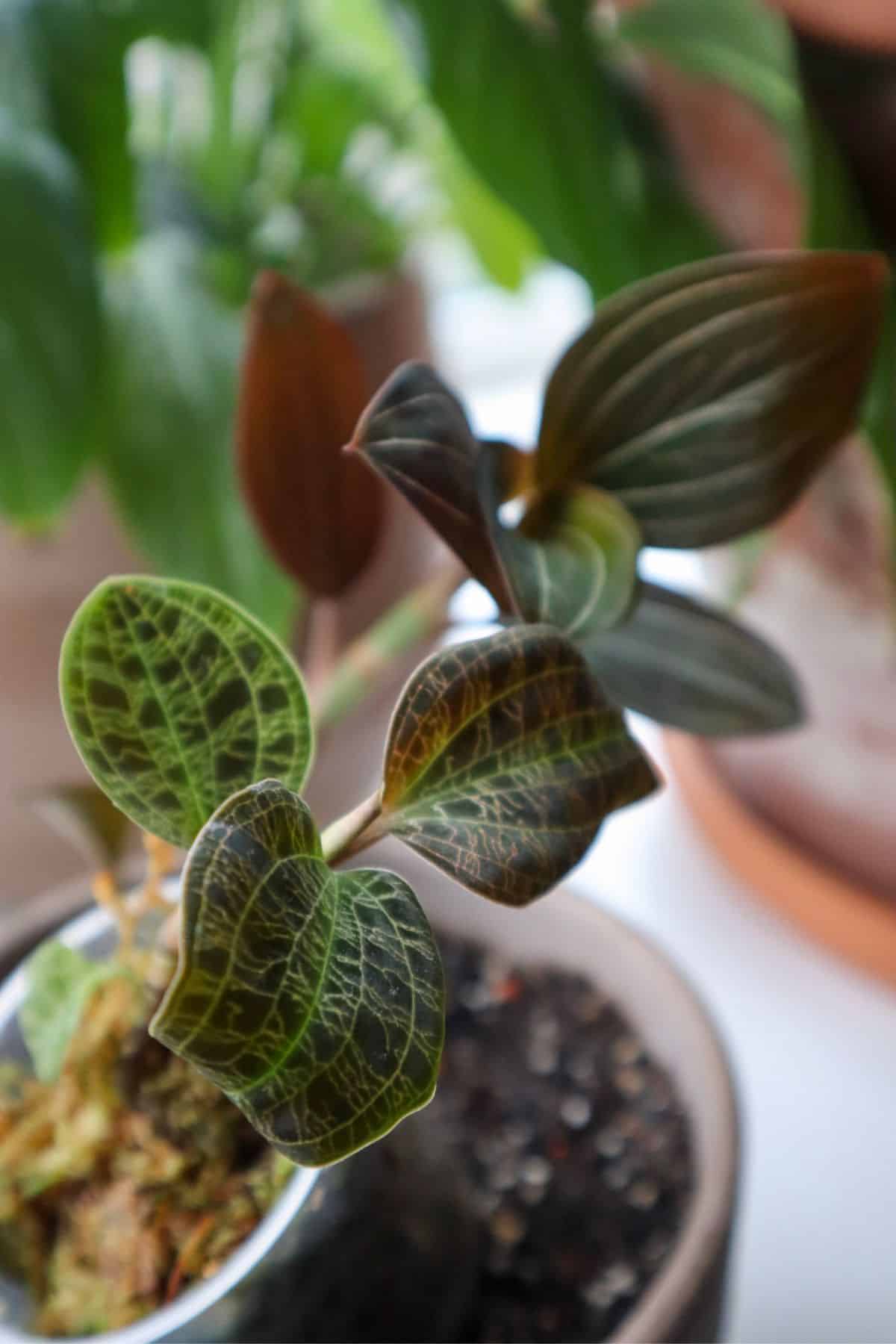
2 | Humidity
Humidity is such an essential factor for orchids.
According to the American Orchid Society, “Virtually all orchids do best when humidity ranges from 40% to 70%.”
However, meeting those conditions can be tricky in terrariums. So, you’ll need to select species that can handle a higher level of humidity where possible.
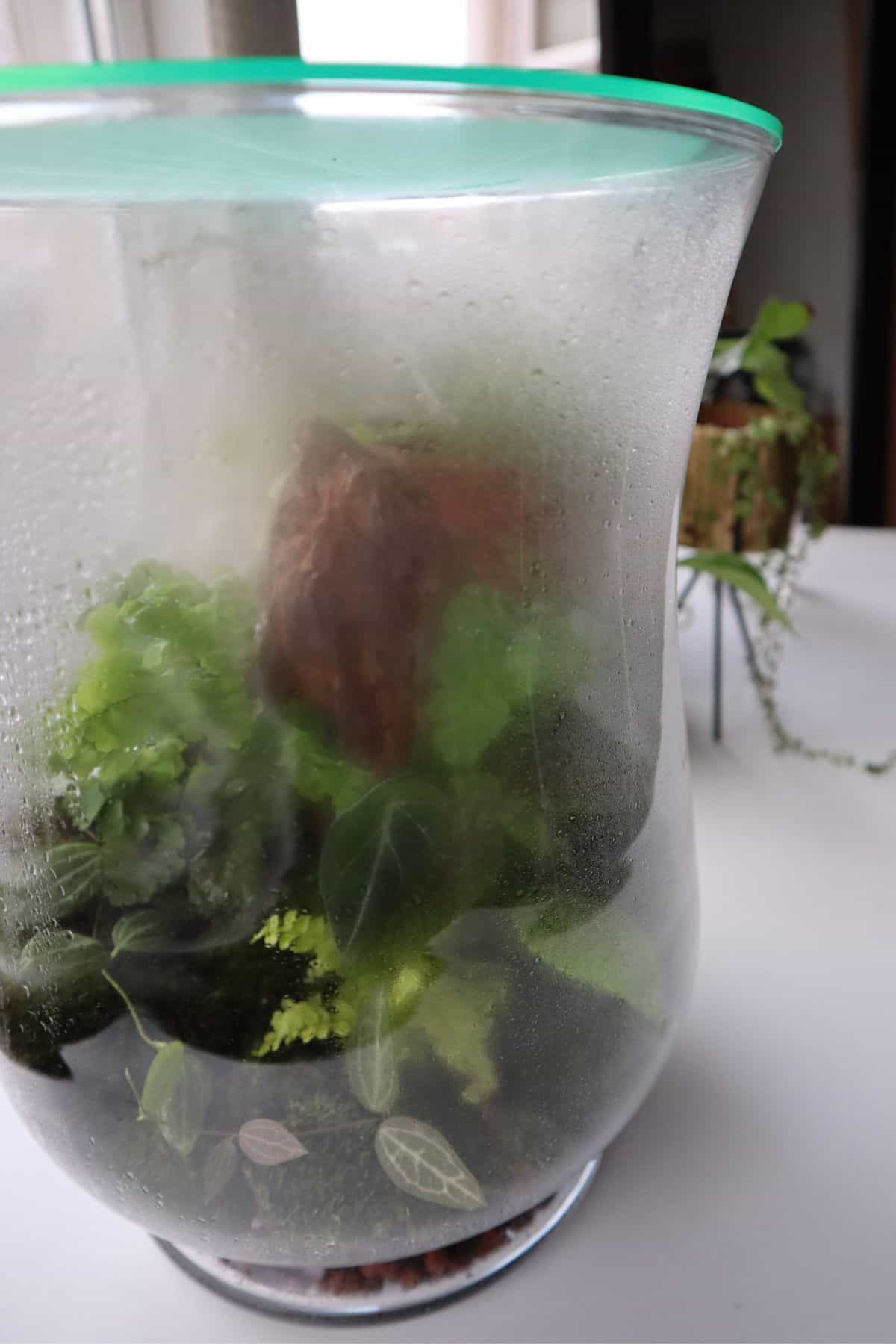
On the other hand, an open terrarium essentially matches the household conditions. Here in the UK, 50% humidity is easy to achieve, but households in different climates may struggle to reach that level.
So, it’s essential to choose the right species to match the kind of terrarium you want to build/the kind of conditions you’re able to create.
3 | Planting Type
Around 70% of all orchids are epiphytes, according to the Brooklyn Botanic Garden. Meaning they typically grow on trees and other objects in the wild.
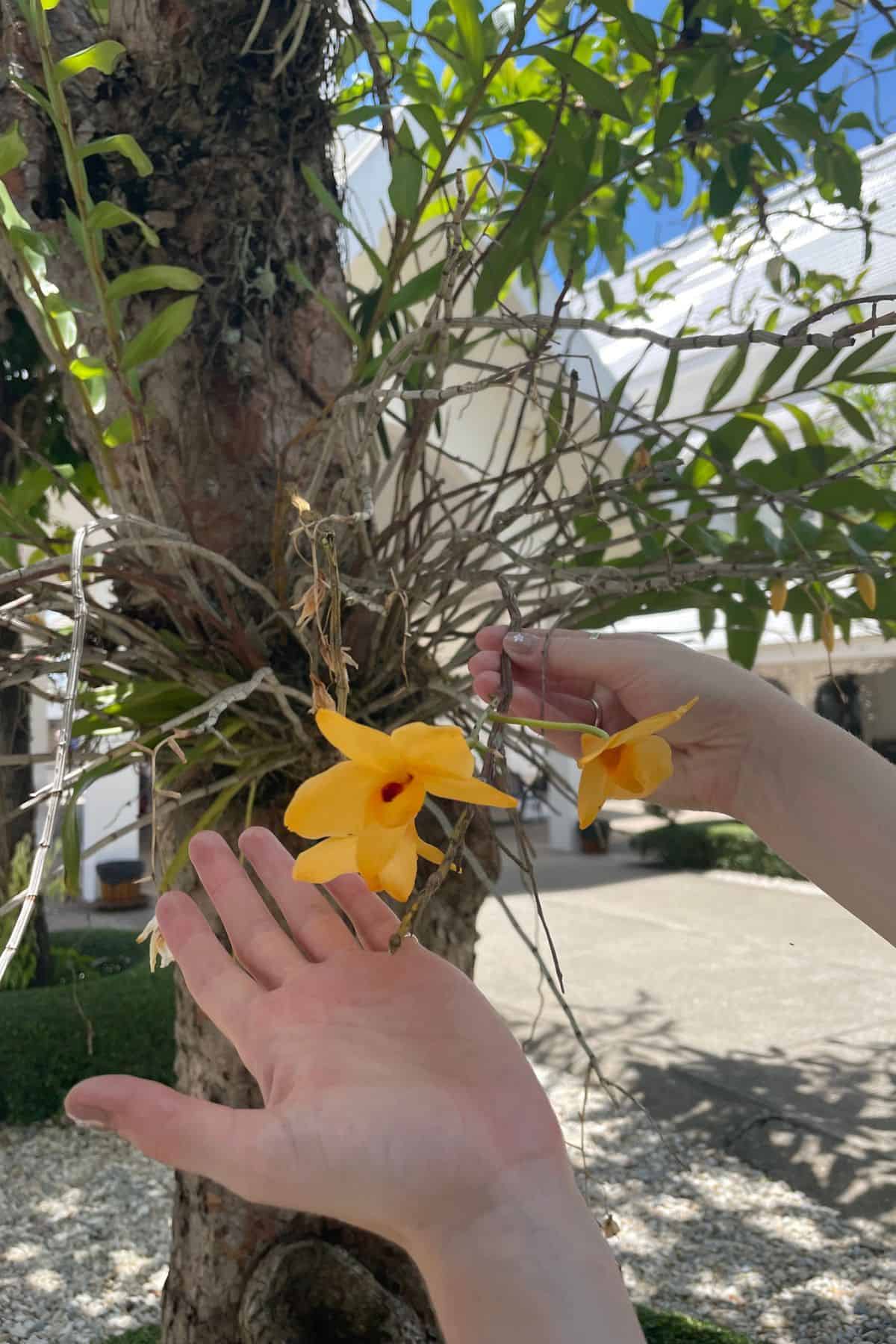
Does that mean most orchids need to be mounted epiphytically in a terrarium?
Well, not necessarily.
Some are definitely going to need mounting to a terrarium background or hardscape branch. Others (like the jewel orchids mentioned above) will need to be planted directly in the substrate.
Then there’s a selection that can do both.
So, it’s crucial that you select orchid species that you can cater to in your setup.
Types of Closed Orchid Terrariums
Generally speaking, the higher the humidity, the higher the necessity for airflow.
Which, in theory, makes closed orchid terrariums a recipe for disaster…
But fear not, we have solutions!
For moisture-loving orchids, a closed terrarium can be a good fit. We just need to make sure we can either provide some airflow, find an alternative way to achieve the benefits of airflow or mitigate the problems associated with airflow.
Orchids don’t so much need airflow itself (not like light and water), but rather the drying and gas-exchange effects that it brings.
We can accommodate those things if we’re creative.
Your solution will usually depend on the kind of container you choose.
Tabletop Orchid Terrarium
These are your typical small terrariums, the likes based in a glass vase or a jar, for example.
As they’re simple (and fragile) containers, there’s only so much you can do to mitigate the airflow issue directly.
One option, of course, is to open it up now and again or use a partial seal on the lid.
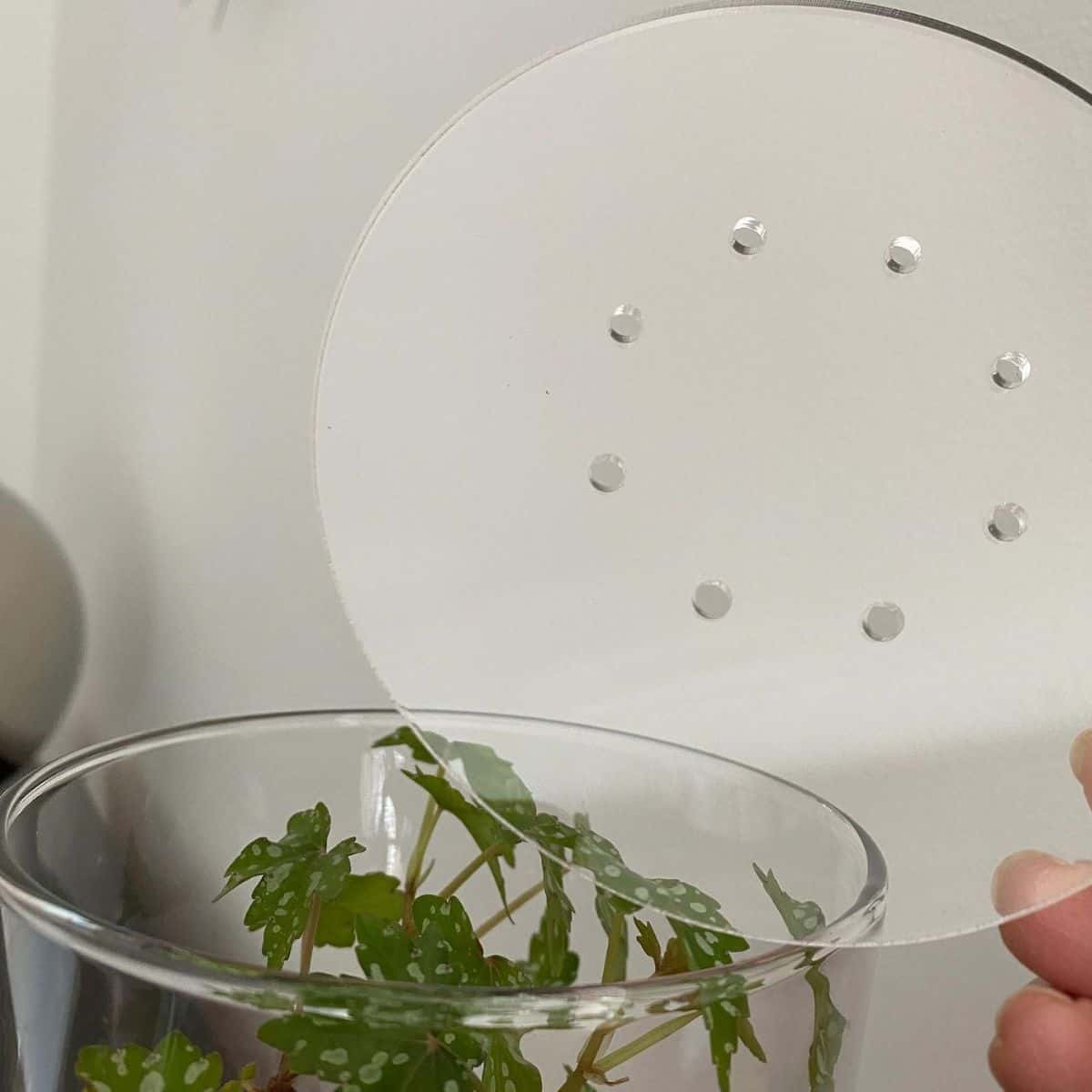
Both of these methods can work, but you’ll need to keep up with relatively consistent misting.
The best solution? Make it bioactive.
Mold is the primary adverse outcome of poor airflow in a high-moisture environment, and we have a fantastic mold control solution in the form of springtails.
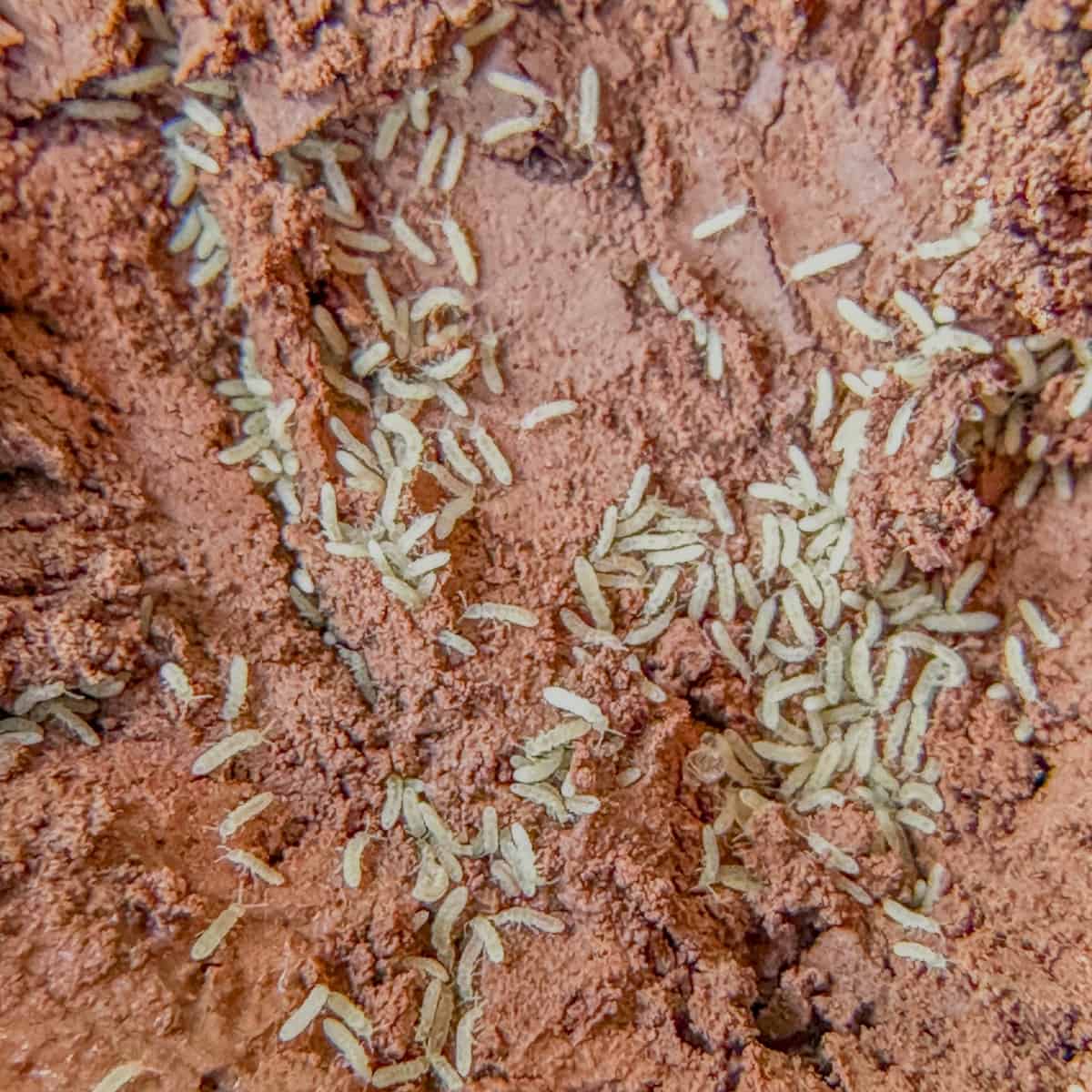
👉 Grab a culture of Temperate White Springtails.
Next, we can help to alleviate these issues further through our plant choices.
Personally, I’ve found jewel orchids to be the easiest choice for small closed terrariums.
Like all orchids, they still do best with airflow. But I find them pretty forgiving compared to many other orchids on offer.
Not to mention the fact that they’re both small and happiest being planted like any other terrarium plant. It’s a win-win.
- Check out the Macodes and Anoectochilus plants for starters (plus, they are stunning!)
- Alternatively, orchids from the Dendrophylax genus are reported to handle stagnant air.
Honestly, orchid terrariums are a lot of trial and error. They’re never guaranteed to work, and you might have to try a few different species depending on your setup and unique conditions.
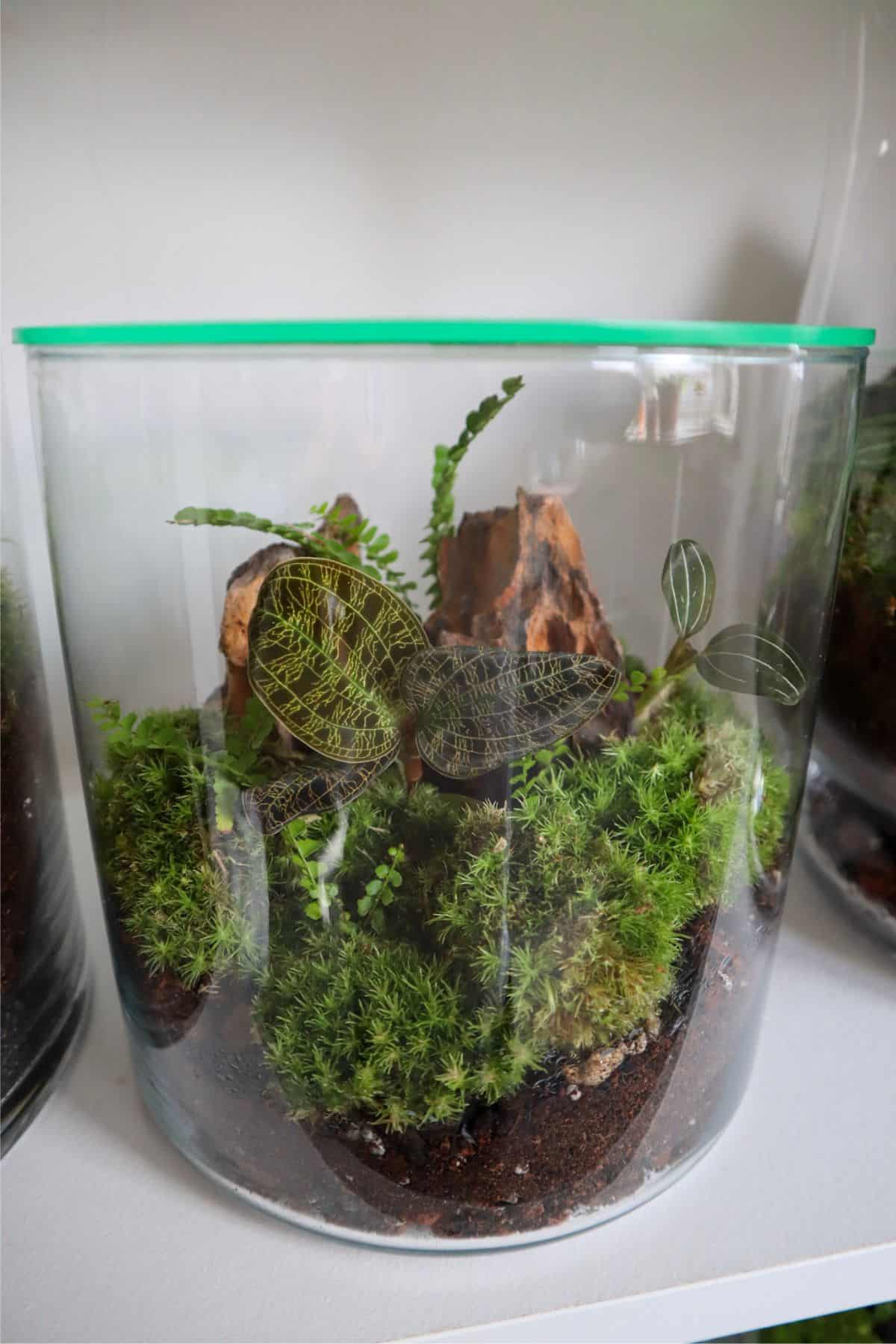
Orchid Terrarium Tank
The other – arguably more effective – solution is a tank-style terrarium.
Bigger is generally better here.
You’re able to fit a mechanical ventilation system (i.e., fans) in tandem with a misting system. So you get the best of both worlds. Regular moisture and airflow while maintaining high humidity.
This added airflow opens up more room for exciting orchid choices.
And the extra space opens up a lot of opportunities for mounting epiphytic species.
- Check out the smaller moisture-loving species from Masdevallia, Bulbophyllum, and Lepanthes.
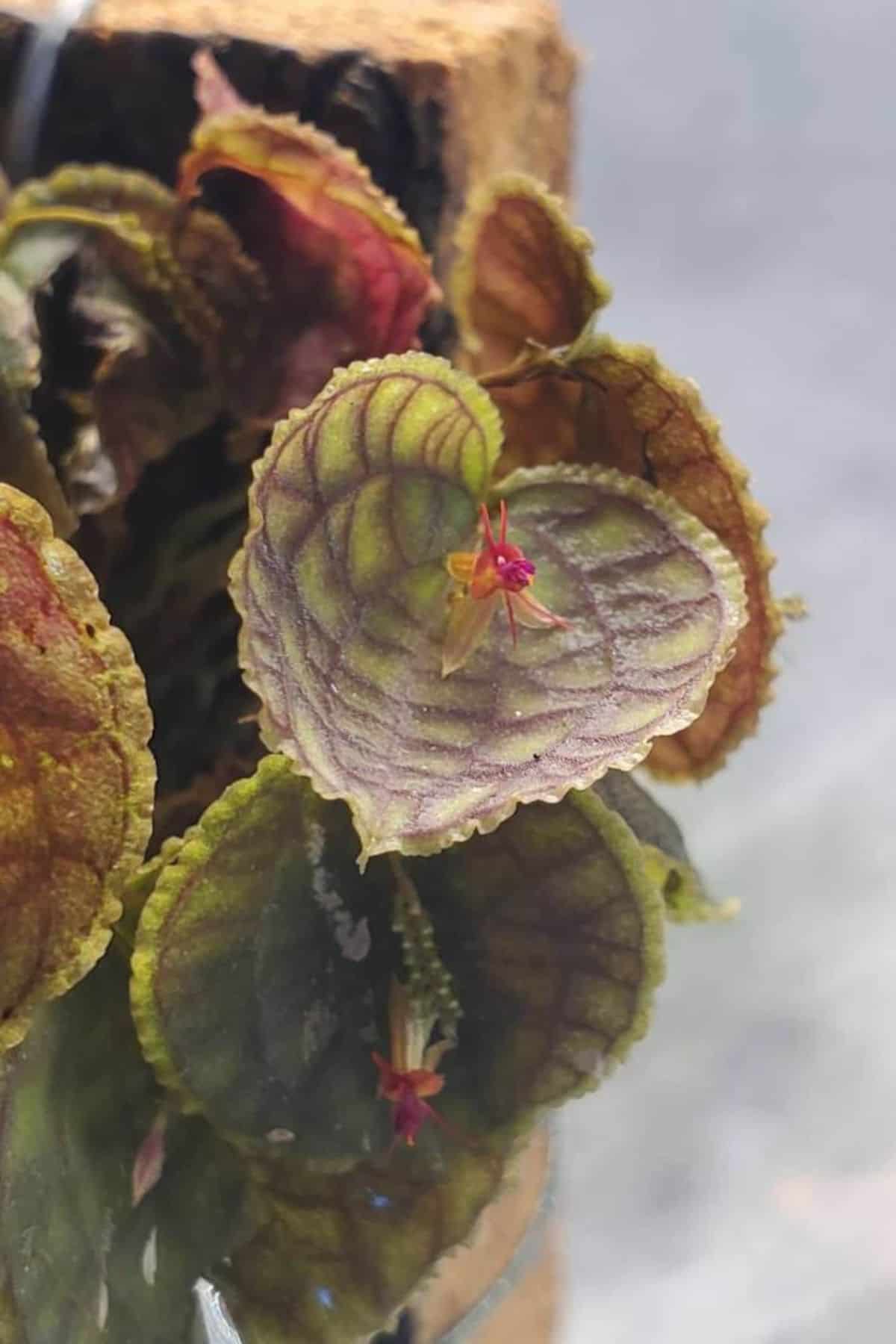
👉 Shop Masdevallia orchids on Etsy.
What About Open Orchid Terrariums?
An open orchid terrarium can work for you if you live in a naturally humid climate.
After all, planted in an open container, your orchid is essentially growing as a houseplant in your household conditions.
You’ll probably want to pick low-humidity orchids, though, just to be on the safe side. That’s why the likes of Moth Orchids are so popular. They’re very forgiving on the humidity front.
You can also get miniature Phalaenopsis orchid species if you want that classic look in a regular-sized terrarium.
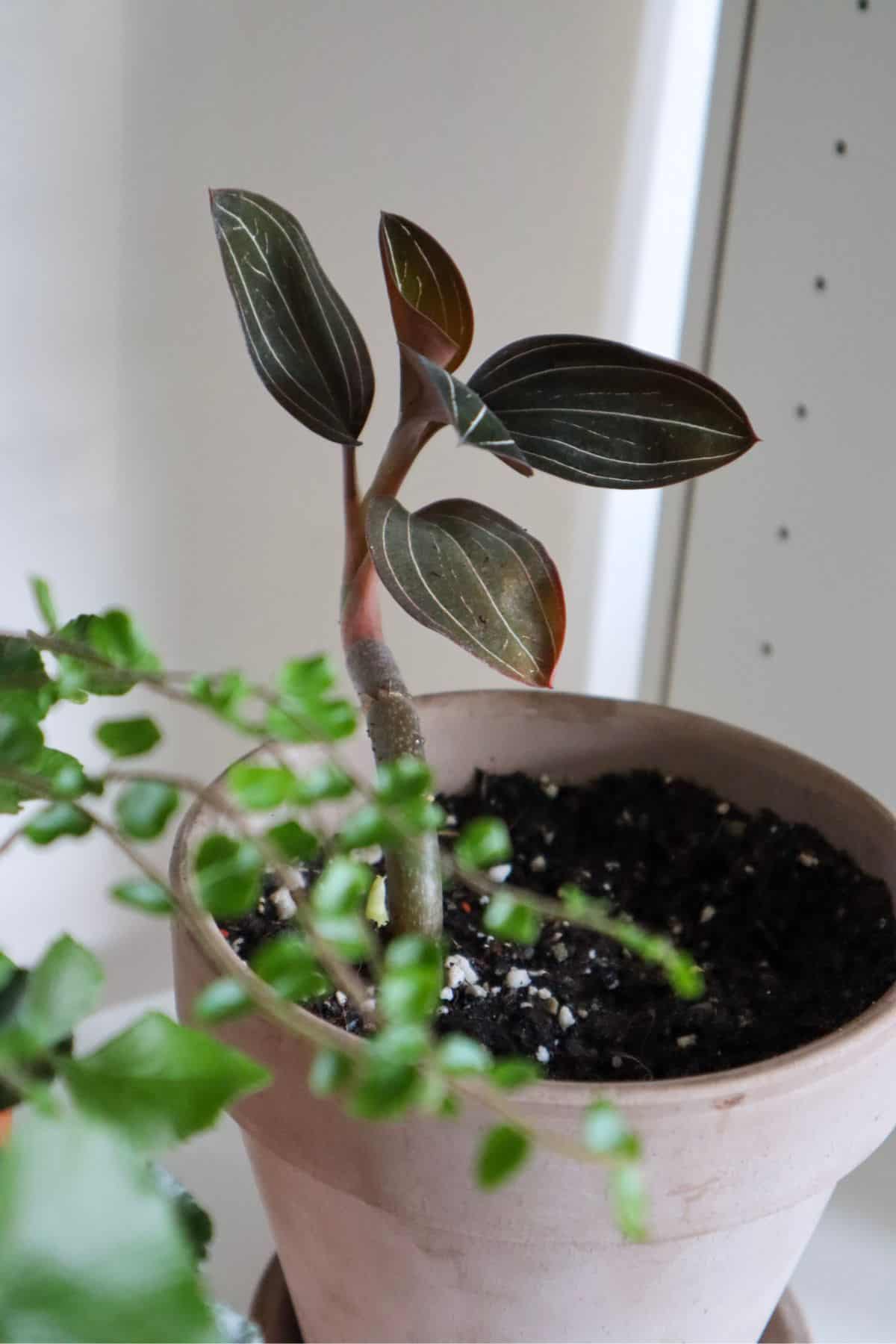
The downside of an open terrarium is that without the added humidity, you won’t be able to plant live moss with it.
The Best Orchid Terrarium Substrates
Seeing as most orchids are epiphytic, you’ll need a substrate that’s able to mimic those conditions as best as possible.
In the wild, attached to trees, they’d be repeatedly soaked and dried as they’re exposed to the rainforest weather.
So, you’ll need a substrate that can provide plenty of moisture and has fantastic aeration.
That’s why traditional orchid mixes are typically very chunky, utilizing lots of orchid bark (for orchids, not from them) to create air pockets throughout.
👉 Our signature terrarium substrate mix does exactly this.
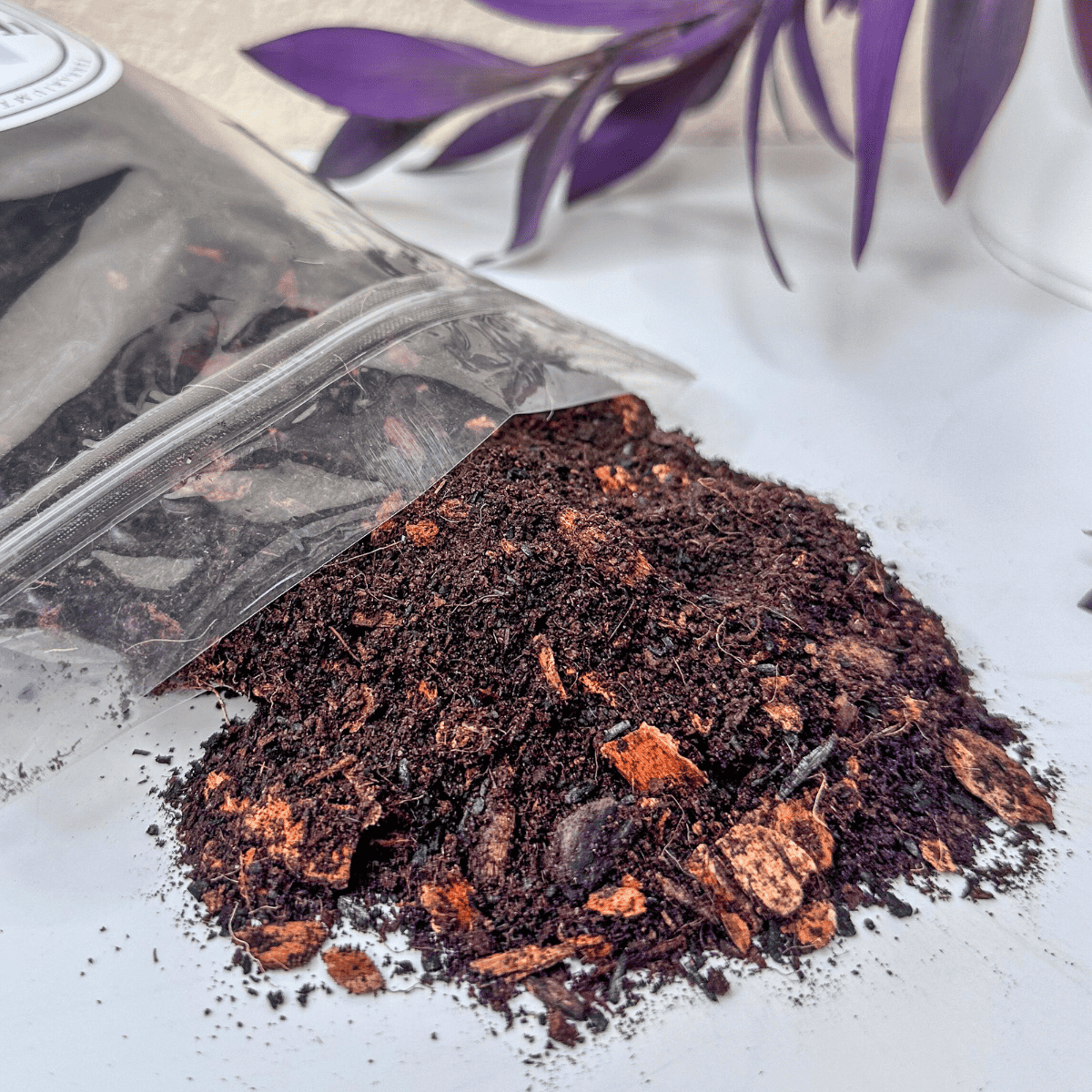
Orchid Terrarium Care
When it comes to orchid terrarium care, there’s no one-size-fits-all care approach.
We’ve already outlined a variety of very different terrarium setups, and each will require a very different care approach. Particularly on the humidity front.
That being said, there are some common requirements:
- Much like typical terrarium plants, orchids perform best in bright indirect light. If you want a nice, healthy bloom, aim for the brightest spot possible that’s not in direct sunlight.
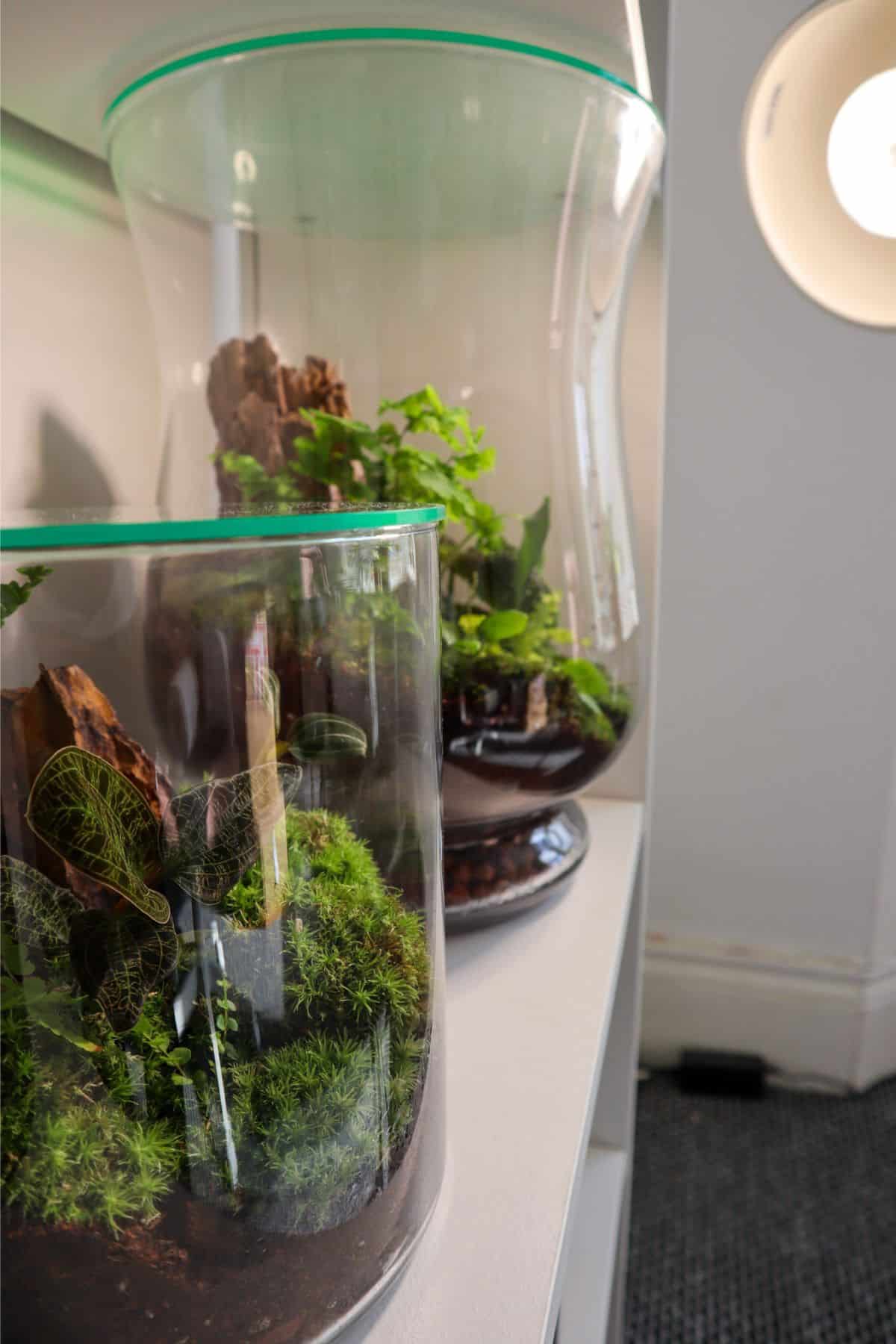
- When it comes to the question of how to water orchids in terrariums, I’d do so much like any other tropical terrarium setup. However, I would take extra care to avoid watering the orchid itself where possible. We don’t want to make it harder for the foliage to dry when it’s already low on airflow.
- The ideal temperature will depend on the different orchid species, but it’s essential to maintain that temperature as consistently as possible. Orchids can be sensitive plants, and a sudden temperature drop can take a heavy toll on plant health.
Over to You
That concludes our orchid terrarium adventure.
The key takeaway here? Getting orchids to grow in terrariums has its challenges, but it’s possible with a bit of trial and error and good luck.
I’m sure the reward of a beautiful bloom is worth it, though.
Have you successfully managed to build and maintain a happy orchid terrarium?
Share your secrets in the comments!

Thoughts on mounting a mini phal orchid to a piece of driftwood and placing that inside a closed terrarium. I’m wondering if that would balance out the higher humidity of a closed terrarium.
Sure, I think that’d work! I’ve seen MissOrchidGirl do something similar on YouTube with some success.
Hello! I have a question: in an open terrarium you are suggesting preserved moss but I’m a bit confused since most preserved moss cannot be watered at all. Any particular kind you recommend? Thanks!
Hi Giorgia – good question! You’re right that preserved moss can’t be watered – honestly there isn’t a perfect solution for moss in open terrariums. Live moss will dry out, so the best bet is to use preserved and remove it when watering your terrarium.